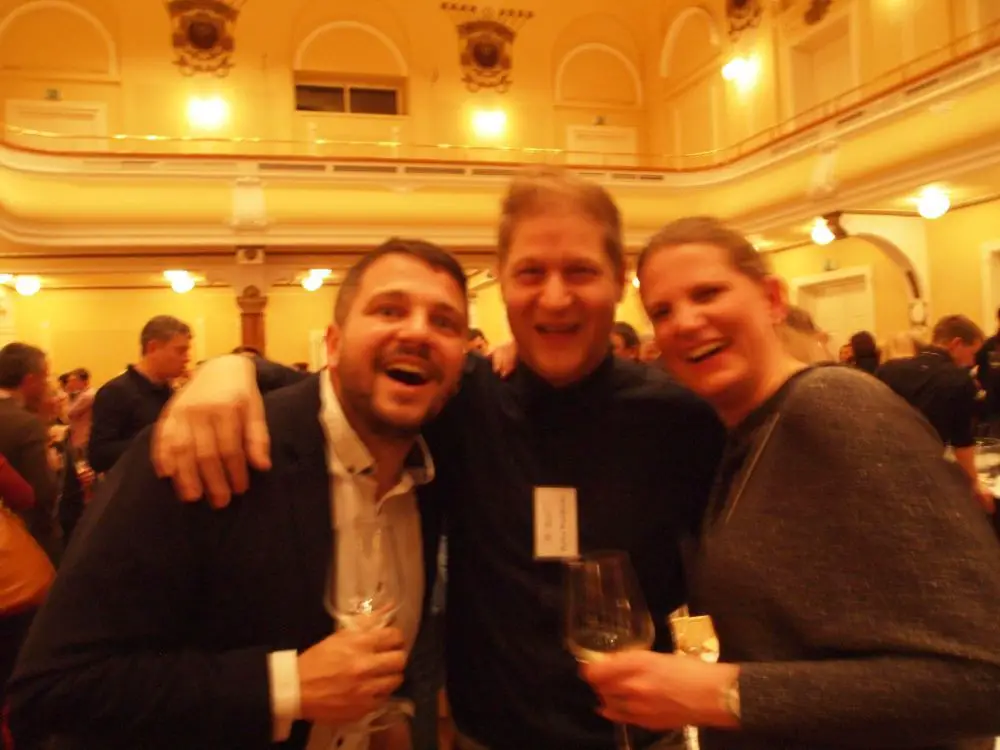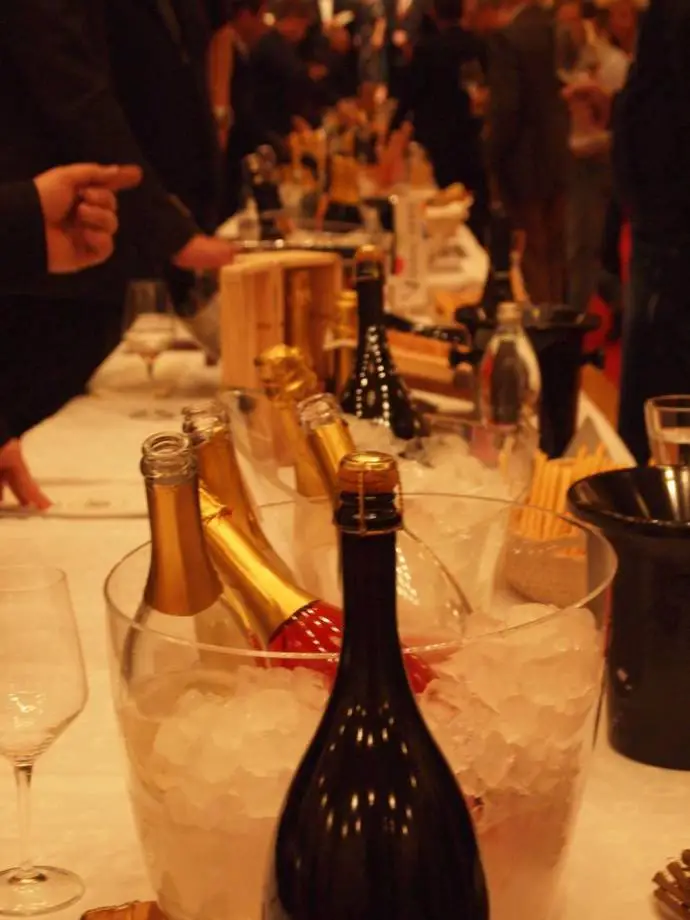February 27, 2018
Not so long ago we attended the Sparkling Wine Salon in Ljubljana, the first of the big wine tasting events this year, which due to the sector’s continuous development are multiplying in the capital and beyond. The occasion was also the fifth anniversary of the event, which appropriately hosted a record number of producers (44), wines (120) and visitors (750).
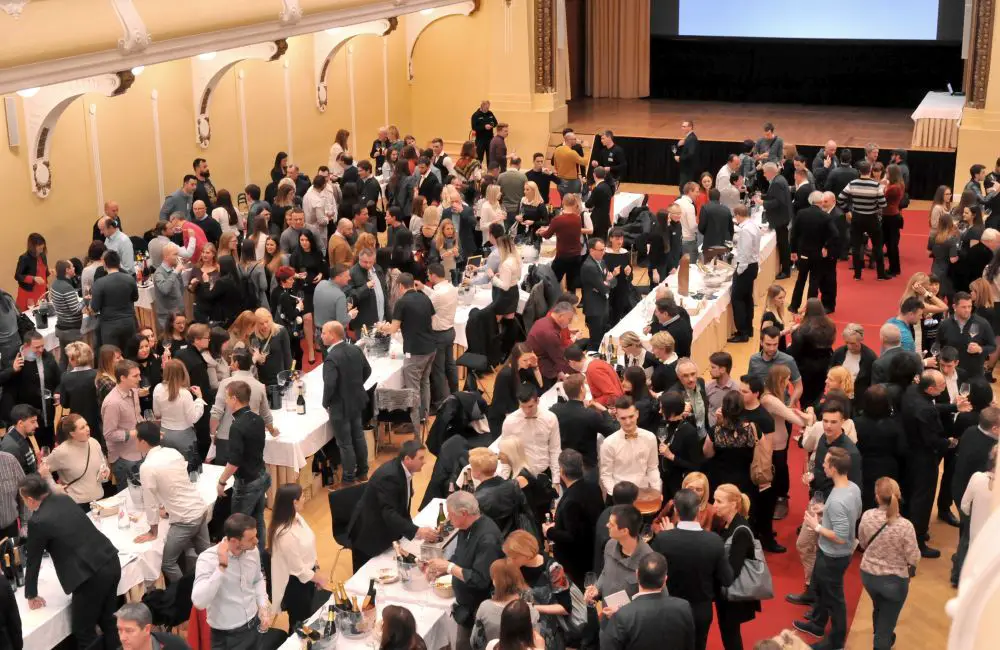
Photo: Julio Frangen, Salon of Sparkling Wines Ljubljana
This is not surprising given that the production of sparkling wines has expanded significantly in the last few years, with almost every cellar having a version or two of its own bubbly. And who can blame them, as the fruity bubbly freshness, as the experts might say, can also be enjoyed at much earlier hours of the day, even during brunch, when a still wine would seem out of place. Along with rising supply has come rising demand, as consumption of sparkling wines is not anymore limited to special events, especially since even the best of the produce in Slovenia is sold at very competitive prices, sometimes a bit too competitive, we were told by some of the producers.
As is common at such events, and this one in particular, an important part of the fair is the wine competition, which seems to be a critical part of the brand building of this nascent industry. Winning awards and thus gaining brand recognition also allows the producers to perhaps raise the prices of their wine without fearing that consumers might turn to a cheaper product, although even the winning bottles remained under 20 EUR, and most of the rest was available around or below the 10 EUR mark, especially if the bubbles had been achieved through the cheaper tank (Charmat) method of second (CO2 producing) fermentation.
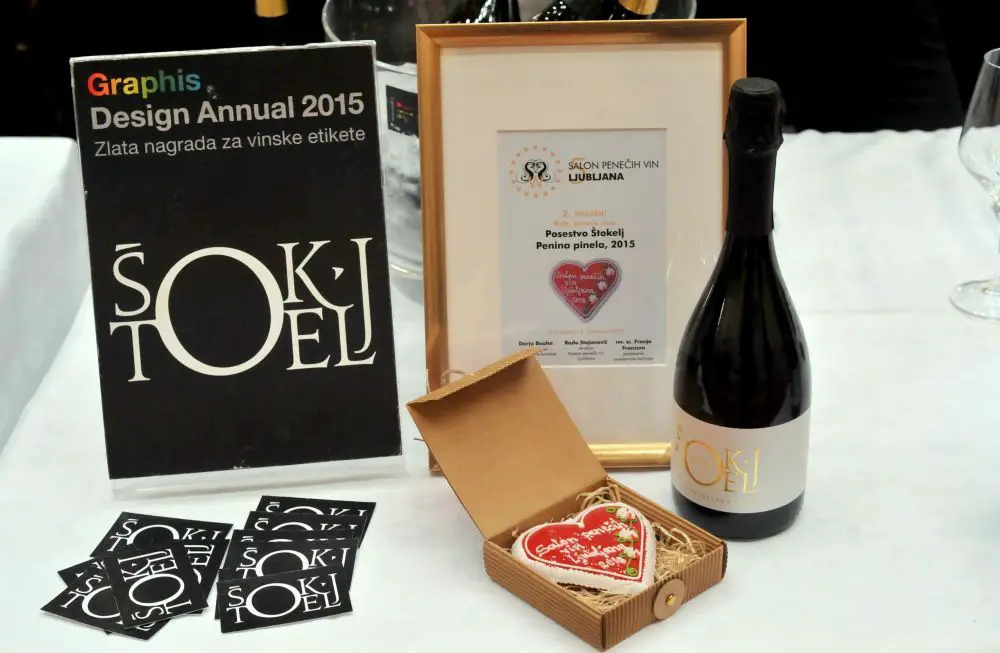
Photo: Julio Frangen, Salon of Sparkling Wines Ljubljana
While competition in itself might have a negative impact on the relationships among the competing cellars, we were told by an enthusiast and employee of the KZ Metlika Wine Cellar (White Carniola wine growing region) that this doesn’t need to be so. Support, transparency and recognition of a winemaker who succeeds in producing a bottle of exceptional quality can have beneficial effects on the brand recognition of the entire wine growing area, something, he stated, that seems to have been long known by the winemakers of Goriška brda, but is now increasingly practiced in the other regions as well.
As already mentioned, there was a lot of wine available at the Salon to taste for free. As nobody was really selling per glass and only some of the stalls were willing to sell per bottle, we had to ask how someone could get some to take home on a normal day. Most winemakers invite people to purchase wine from their cellars. Here, unlike in stores, where the wine standing upright on the shelf and exposed to daylight for an indefinite amount of time, the wine is stored properly and hence retains the properties which would otherwise be lost. It is interesting to note that most of the producers (all of those we talked to) also send their bottles by mail, if you order them one, and a list of suppliers offering this service can be found here. However, some specimens that we tasted at the Salon can also be found in general stores, such as most (but not all) of the produce of Radgonske gorice (the classic gold and Charmat silver labels with the stork at the top of the bottle), Vipava Wine Cellar (zelen penina was one of my favourites) and Metlika Wine Cellar, to just name a few. If your local store doesn’t hold these wines, then you will certainly find them in E.Leclerc.
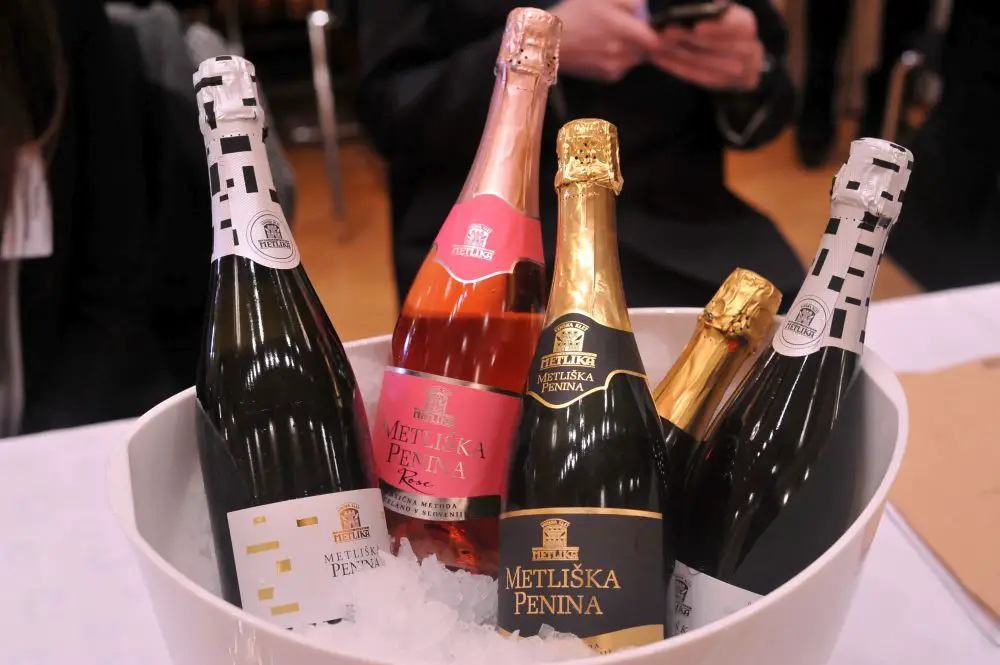
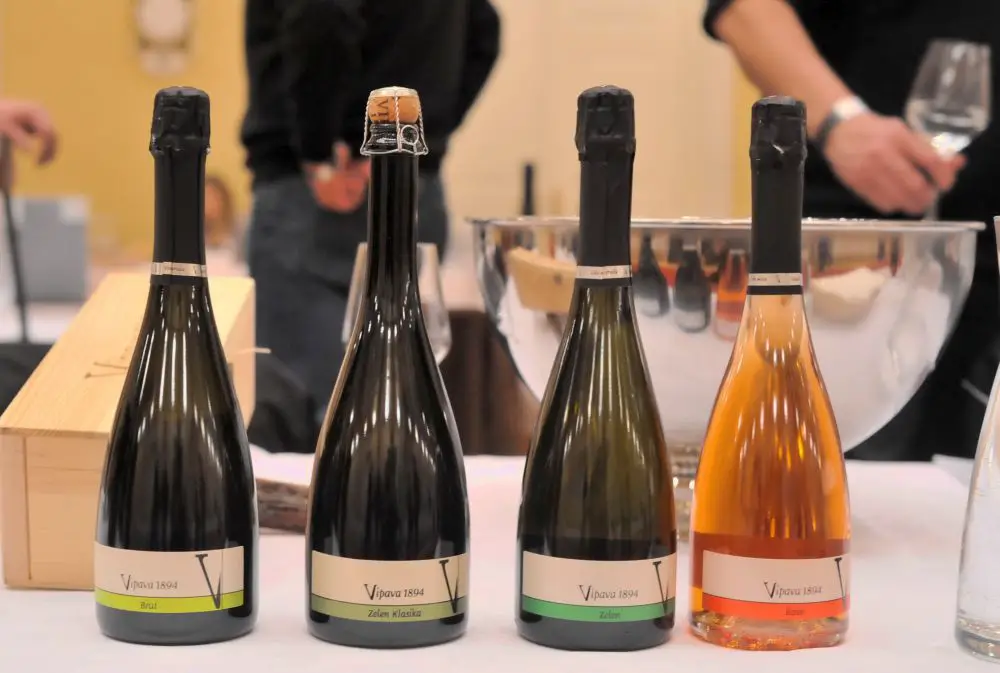
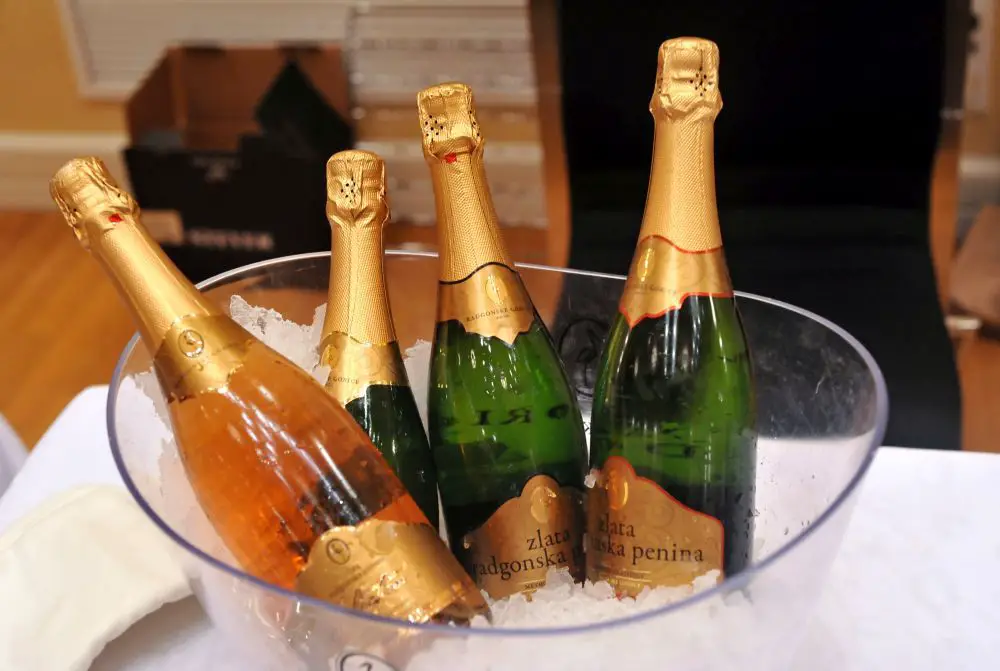
Photo: Julio Frangen, Salon of Sparkling Wines Ljubljana
Two versions of Radgonska penina Gold, however, Ciconia and Selection, are not sold per bottle at all, but in restaurants only, and as the host of the stall stated, he would prefer consumers didn’t know what their retail prices are as people tend to be quite stingy when it comes to wine, comparing retail prices with restaurant prices, although they are quite calm and even wasteful when it comes to drinking beer.
Although we agree with this observation, in our defence of beer drinkers we have to note that an important part of choosing beer over wine is its lower alcohol content. There is a certain bias in the wine world towards heavier wines (in still wine categories, the awards usually go to fuller bodied wines that are rich in many ways, alcohol content included), which could be mostly explained by higher cost and risk of the production of such wines. Perhaps the gender stereotypical norm that lighter and sparkling wines are women’s drinks, hence somewhat of a lesser grade, was derived from here, an idea that we expect to be overturned by practice in the near future.
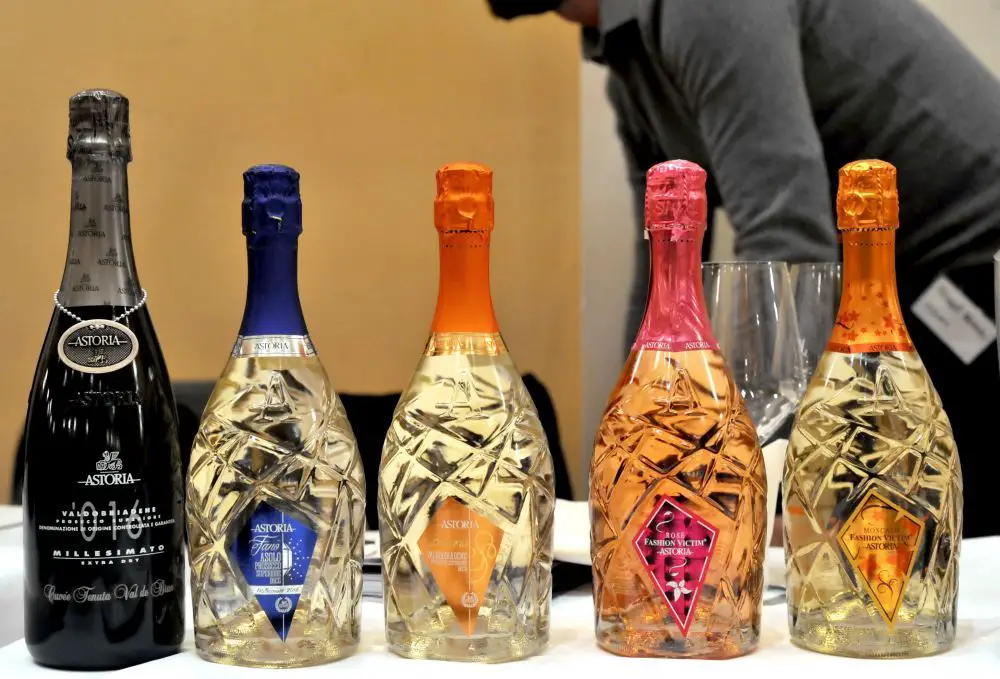
Astoria, Fashion Victim Moscato (on the right), sweet, alcohol content: 6.5 vol.% Photo: Julio Frangen, Salon of Sparkling Wines Ljubljana
Turning back to the general impression of the Sparkling Wine Salon, an overall tendency to formal wear was noted, despite the absence of any formally announced dress code. This was somewhat expected since the event included an award ceremony, but even if the ceremonial part was missing the venue itself calls for some matching self-decoration, in a similar way to that seen at classical concerts and theatres. Furthermore, the presence of alcoholic beverages always requires some self-discipline and restraint, and the clothing itself seems to play an important function here. Getting blind drunk and being fancy are two things that don’t go together very well, and there is a certain psychological effect by which our clothes seem to control our behaviour. We are certainly looking forward to testing this theory in the upcoming wine fair Vinus, which will take place on March 14 in Emonska klet Ljubljana, a place well known for student parties. Based on our knowledge of this venue we do not expect to see so many people wearing such formal outfits, but instead a greater frequency of more relaxed public drunkenness and general excess. We are, however, certainly willing to be pleasantly surprised.
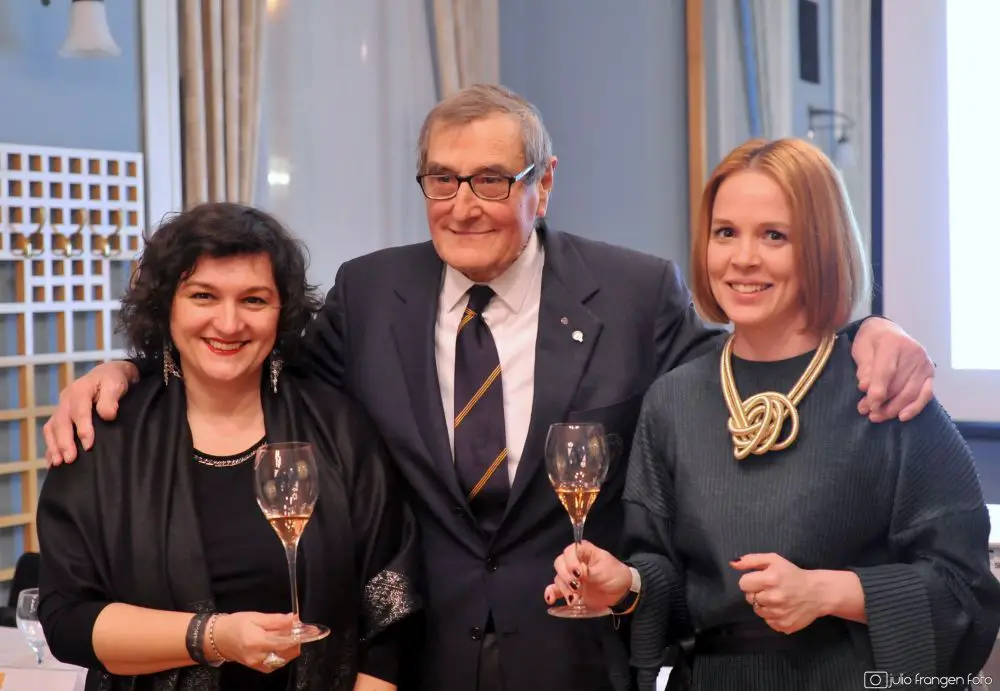
Photo: Julio Frangen, Salon of Sparkling Wines Ljubljana
Another thing that prevents the cultured drinkers and professional wine tasters from distorting their wine experience by the over-effects of alcohol is spitting the drink out , then pouring the remains into a specially placed black container, present at every stall and regularly emptied by staffers at the fair, before moving to the next specimen. This practice, although understandable when it comes to the proper wine judging routine, where one person is expected to taste a large number of wines in a short period, results in gallons of premium wine being flushed down the drains. Not a pleasant view for anyone, let alone someone who has worked all year to produce it. Still, if you are not a judge then there is absolutely nothing wrong in finishing your glass at such events, without hurrying on to the next one, as you will not be able to taste them all anyway. Moreover, most of the producers were quite glad to even give a refill, which was also free of charge.
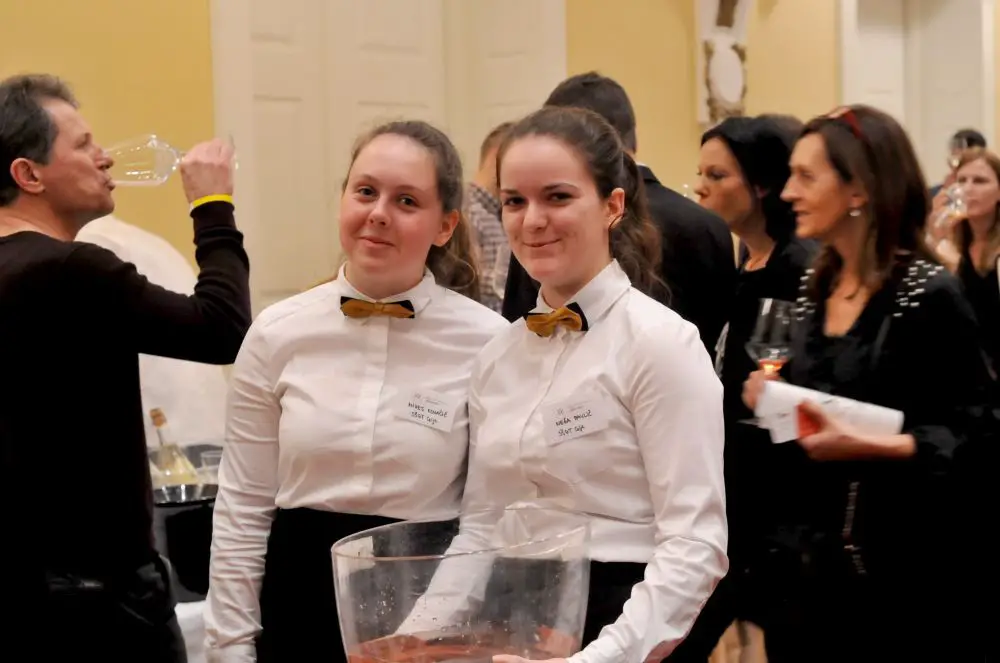
Catering students with a bowl of disposed wine, Photo: Julio Frangen, Salon of Sparkling Wines Ljubljana
We certainly learned a good deal of good stories and made some friends at the Sparkling Wine Salon, where even a visitor going on their own wouldn’t feel lonely. But when the number of bottles sampled becomes more than you can count, perhaps it’s time to take your lovely dress home. We will come again.
